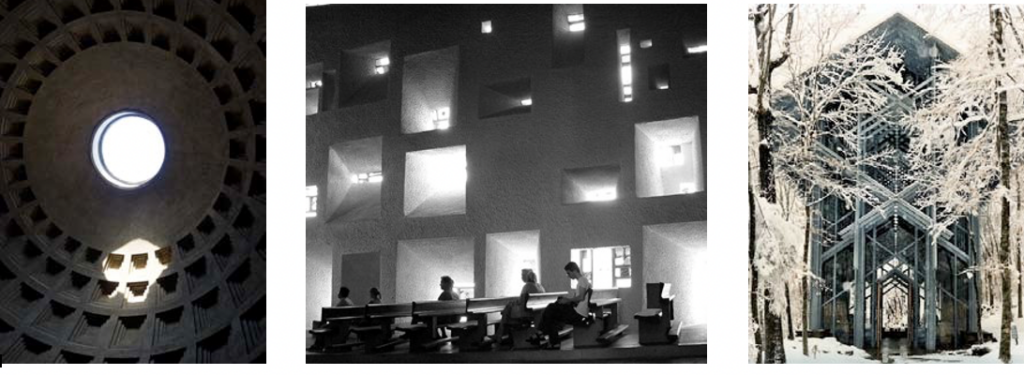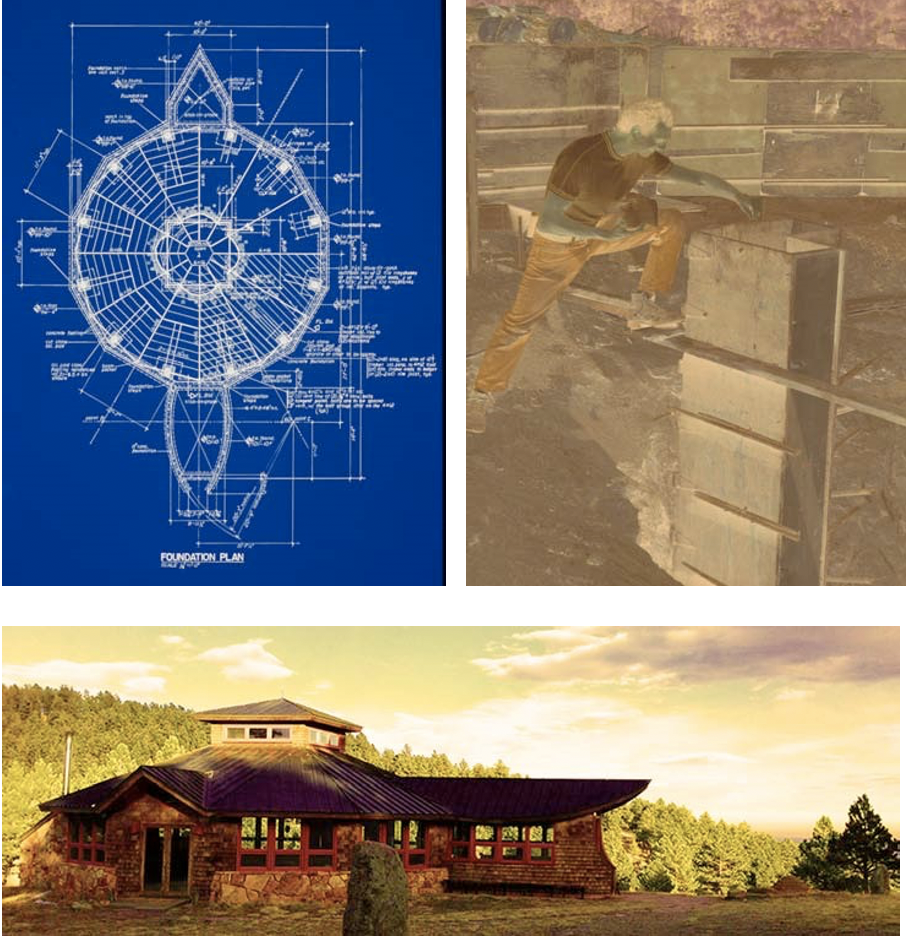Phillip Tabb
Texas A&M University, College Station, Texas cassicat7@yahoo.com
Introduction
This paper explores celestial moments in architectural in two differing ways. First is through a discussion of the external phenomena and principals that connect us to this larger and more inclusive cosmological context.1 Second is through ceremonial participation that can help inform design and construction through an evolutionary process, which helps enable continued understanding of these higher values and broader considerations with the need to reinforce them throughout the entire process – maintaining the golden thread. Both will be viewed through the use of a case study that demonstrates these correspondent threads and shared and complementary objectives. 2 Sacred intentions in this respect refer to the broader inspirations informing the design process through construction and finally to occupation and use. The celestial and ceremonial orders refer to concepts of a shared reverence, respect, caring, stewardship, importance of conscious remembrance, and mutable connections of place to cosmos.
Celestial Moments and Participatory Process
Keith Critchlow observed that “Architecture, as sacred expression, is concerned with the power of levity in the physical, emotional, intellectual, inspirational and ontological realms, always dedicated to raising experience to a more inclusive and comprehensive unity and integrity.” 3 This suggests that certain building types overtly respond to diurnal and seasonal changes, special times of the year, and moving constellations in the sky in order to facilitate this connection. Ceremonial participation in the process further enriches the purpose by connecting the function and broader experience of the place. Certain religious and secular sacred architecture, sacred buildings that were not purposed specifically for religious functions, are examples of designs that can benefit from celestial moments and ceremonial practices.

Figure 1 (composite). Celestial Moments in Modern Architecture: Left: Interior of Pantheon. Center: Interior of Ronchamp Chapel. Right: Thorncrown Chapel
Examples of these celestial-ceremonial principles can be seen with the Pantheon in Rome (126 AD), Ronchamp Chapel and Thorncrown Chapel, as seen in Figure 1, especially in their relationships with the cosmos. The Pantheon was originally used for religious activities, but now is a sacred place for all humanity to experience the elemental power of its oculus and the changing qualities of light. Ronchamp Chapel was a pilgrimage site celebrating the Virgin Mary with its incredible south, Virgo constellation wall. And the Thorncrown Chapel is enjoyed for sacred functions and its sheer play of structure and light.4
The StarHouse Case Study
This paper will feature the case study of the StarHouse constructed in the 1990s outside of Boulder, Colorado, and seen in Figure 2. The project was designed by the author and is an interesting blend of ceremonial interventions and sacred design. The finished building became a focus for community fellowship, sacred music, meditations, and celebrations of the seasons. The ‘core events’ include Solar Celebrations (Solstices and Equinoxes); Lunar events (Full and New Moons); and The Path of the Ceremonial Arts Program. Many groups rent the space for public and private events, like weddings. In order to create the most pure and serene contemplative space, the structure does not incorporate any electrical or mechanical components. In other words, it is completely off-grid. In addition, it celebrates the earth with a meditative cave, the sky with an echoing clerestory, and a central place organized upon the Native American twelve-fold Pit House and Drum Dance Lodge.5

Figure 2 (composite). The StarHouse Case Study: Top left: StarHouse Foundation Plan. Top right: Foundation Construction Bottom: StarHouse Completed Building.
Many materials were derived on site and the construction of the work followed a ceremonial process uncommon in most building. Ceremonial participation related to construction was influenced by several factors, including the presence of a more mindful craftsmanship in the actual making, and of ceremonial participation throughout the construction process. They were both important in order to create a seamless connection between sacred intentions and the actual physical manifestation of the work. The golden thread that united these steps in project delivery needed constant stewardship and conscious participation. For the StarHouse, ceremonial practices were used throughout the planning, design and construction processes:
- Identification of higher guiding principles and Intentions
- Ceremonial participation throughout design process
- Reinforcement from groundbreaking to consecration, eventual use
- Maintaining the golden thread
References
- Whitfield, Peter: The Mapping of the Heavens, Pomegranate Artbooks, San Francisco, CA, 1995.
- West, John Anthony: Serpent in the Sky, Julian Press, New York, 1989.
- Critchlow, Keith (1980) “What is Sacred in Architecture?”, Lindisfarne Letter 10, Stockbridge, MA, pp. 4-6
- Tabb, Phillip and Senem Deviren, The Greening of Architecture, Ashgate Publishing, 2014.
- StarHouse website: http://thestarhouse.net/ (accessed 5/19/2014)



